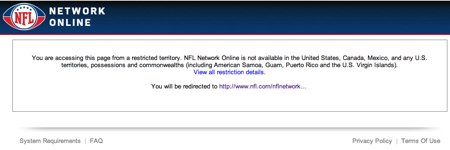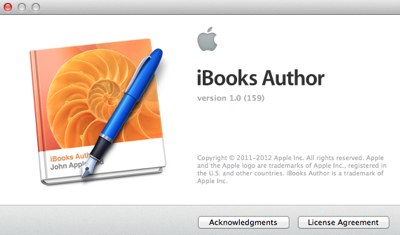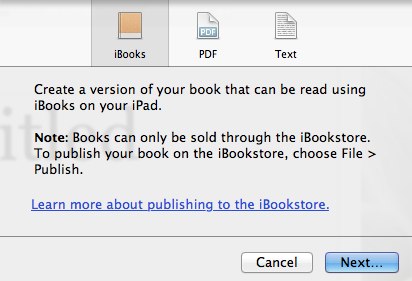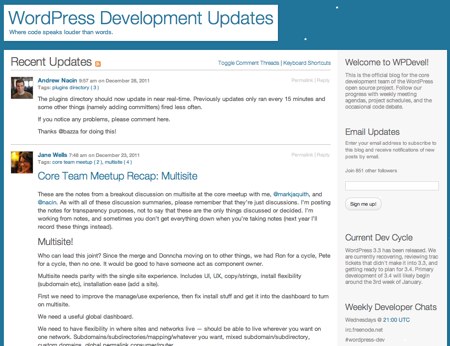Memo To MPAA and other SOPA Proponents: Yesterday was a perfect example of the failure of your current business models to meet consumer demands – and the reason why there is online piracy. It also shows you the super simple secret to stopping almost all piracy.
Let me explain.
As probably most people here in the US know, yesterday we had the US football playoff championships. Even if you aren’t a football fan, it was hard to escape the media attention. Particularly here in the “Patriots country” of northern New England.
While I don’t really follow football, I do like to tune in around the playoffs to watch the final games. However, we don’t have cable TV so I had no way to watch our local CBS station.
Here’s the fundamental problem:
I HAD NO WAY TO PAY TO WATCH THE GAME!
None. Zip. Nada.
No CBS websites had a live stream of the game, nor any other legitimate websites I could find. If I tried to go to the NFL Networks’ website and pay to watch a live stream, I got this message:

Yes, indeed…
NFL Network Online is not available in the United States, Canada, Mexico, and any U.S. territories, possessions and commonwealths (including American Samoa, Guam, Puerto Rico and the U.S. Virgin Islands).
MPAA and SOPA proponents, are you paying attention?
I was trying to give an entertainment network money.
I had my wallet open. Credit card out.
And you failed me.
Now, in my case yesterday, I drove across town and watched the game at my brother-in-law’s house. But had that not been an option and had I really cared enough, I would have gone online to one of the many live streaming sites and sought out a live stream that someone else was running.
Yes, that “someone else” might be someone who is taking a web cam, pointing it at the TV and using one of the many live streaming apps to send their stream out on the web.
It would have been someone “pirating” the live broadcast of the event.
And I might have had to listen to whomever it was swearing at the screen, eating chips and guzzling beer.
But I would have been watching the game!
Because you, the entertainment industry, couldn’t give it to me in the way I wanted.
Artificial Scarcity In An Era Of Abundance
Now, I completely understand why I get this NFL Network Online error message. The NFL has all its various contracts with TV and cable companies where those companies pay the NFL a zillion dollars so that the NFL can then in turn pay the ginormous salaries of the players, the owners and everyone else involved.
The only way the NFL can get the income they need to sustain their business model is to create conditions of artificial scarcity.
The NFL, as a content provider, needs to provide exclusivity to a content distribution provider so that that distribution provider can charge whatever exorbitant rates it needs to charge to cover its investment of a zillion dollars.
The distribution provider, CBS, in this case, needs to recoup its investment somehow… and so it then has contracts with cable and satellite TV companies where it provides exclusivity for them so that they can then charge their own high rates to pay for their fees.
In this case, though, the content distribution provider, CBS, failed to provide a way for a consumer like me to legitimately/legally obtain the content.
The end content distribution networks, the cable companies and the satellite TV companies, also failed to provide a way for a consumer like me to legally obtain the content. I can’t simply call up my local cable TV provider on a Sunday and say, “oh, hey, can you hook up my cable this afternoon so that I can watch the game? and then disconnect it after that?” And they have no way for me to simply view their content online over the Internet unless I am actually a paying subscriber (which again, I’m not).
The content provider, the NFL, similarly failed to provide a way for a consumer like me to legally obtain the content when the content distribution provider offered no option.
So, then, as a non-subscriber to a cable or satellite network, I really have only three options:
- Forget about the content and go do or view something else;
- Go somewhere where I can view the content; or
- Become a pirate. Watch the content on an illegal source.
And while I wrote here about wanting to watch a sports game, you can go back through my text and substitute:
- watching the latest movie;
- watching a hit TV show;
- reading the latest novel of a best-selling author;
- listening to a live concert;
- listening to the latest album of a band.
The fundamental problem with this business model based on artificial scarcity is that is is completely broken in an era of abundance.
I don’t need to subscribe to cable TV to get most of the news and entertainment that I want to watch. I don’t need to sit in a movie theatre to see the latest movie. I don’t need to go to a bookstore to buy the latest novel. I don’t need to go to a music store to buy the latest album.
The Internet has severely disrupted all of those “traditional” channels and we now have an abundance of different channels and different ways to obtain our content and entertainment.
Propping Up Scarcity
What we are seeing with the proposed SOPA and PIPA legislation here in the US is
the failure of the entertainment industry to adapt to the new consumer preferences.
Rather than spend their millions to figure out how to evolve and meet consumer demands, the industry would rather spend their millions to reduce/remove/eliminate/kill all those other distribution channels.
They want to prop up scarcity.
Keep their business model alive.
That’s what this is all about. It’s not about “breaking the Internet”. It’s about putting the proverbial genie back in the bottle and somehow trying to get back to an era when the entertainment industry could be in control of all the distribution channels and thereby charge whatever they felt like charging.
In the end, it will most likely fail. (Assuming we all in the Internet space continue to pay attention to what is going on.)
But the battle will be hard-fought largely because of the insane amount of lobbying money and people engaged with manipulating the political process.
The Super Simple Secret To Stopping Online Piracy
If you’ve read this far, you probably already know the simple “secret” to stopping almost all online piracy:
Give people a way to get…
the CONTENT they want
in the CHANNEL they want
at a reasonable COST.
That’s it.
The vast majority of people, even those “young kids” people say want everything for free, will pay when a legitimate channel is made available.
Don’t believe it?
Consider iTunes. Think of how many millions and millions of songs are being purchased every single day. Because Apple provided a very simple and easy way for people to legally obtain the music content people wanted in the channel they wanted (on their iPods/music players) at a cost that people felt was reasonable.
Now, if you go back a few years, the music industry wasn’t too happy with Apple’s move and did all they could to fight that move.
Apple understood: give people a way to get the music they want in a downloadable form at a reasonable price.
Sure, there’s still probably online music piracy going on – there are some people who will never pay and want everything for free. But for the vast majority of people, why do they need to bother with a pirate music site when a legal download is only a click – and a buck – away?
Amazon’s been similarly disrupting the publishing and book distribution business for years now – and now is doing it again with ebooks. Netflix and Hulu have been disrupting the movie and video distribution business.
They get it.
The MPAA and other SOPA proponents seem to be missing the point.
Entertainment industry folks – want to stop almost all online piracy?
Evolve.
Figure out a way to get us the content we want in the channels we want at a cost that works for us.
Figure out how someone like me can decide to watch a sports game and go online and pay to view it live. Figure out how to let someone watch the latest TV episode of a popular series either live or shortly thereafter. Figure out a way that someone can watch the newest movie in their big huge home theatre on the day of release. Oh, and figure out how to do this globally.
Do that and probably 99% of the online piracy you are currently whining about will simply… go away.
Does that trash most of your existing business models?
Absolutely. I’m not saying this is easy.
I’m only saying that the solution from a consumer point-of-view is simple.
Yes, some of the jobs and companies (and even industries) of today may be lost… but new ones will be created. Yes, the transition will be extremely hard on some people. Transitions always have been. But sticking your head in the sand and pretending the transition isn’t happening will not make it go away. It will only make the transition harder on the people in those jobs and companies.
Stop spending your millions on lobbying for profoundly stupid legislation like SOPA/PIPA and instead spend it on figuring out how to reinvent the way you connect with consumers in the world of today.
Evolve.
If you found this post interesting or useful, please consider either:
 While I ranted last week (here and here) about the lock-in aspect of Apple’s launch of iBooks Author, an even more disturbing action Apple took was to “embrace and extend” the EPUB standard and create their own version. In programming-speak, they “forked” the standard and are now off with their own proprietary – and incompatible – version.
While I ranted last week (here and here) about the lock-in aspect of Apple’s launch of iBooks Author, an even more disturbing action Apple took was to “embrace and extend” the EPUB standard and create their own version. In programming-speak, they “forked” the standard and are now off with their own proprietary – and incompatible – version.




